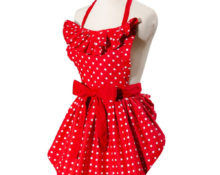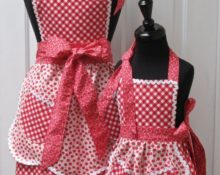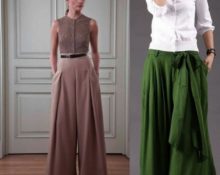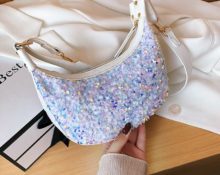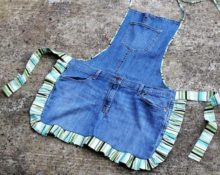An apron is a fairly popular product made from fabric, as well as other materials. It is designed to protect both clothing and various surfaces, working mechanisms and tools. It can be seen not only in the apartment, but also in the sales area, in the hospital, in the factory and even on the street.
Types of aprons
Contrary to the beliefs of most ordinary people, there are quite a lot of them. They are used in different areas and often perform several functions simultaneously:
- ensure cleanliness and also extend the life of other, more expensive items;
- allow you to keep the necessary equipment at hand (due to the presence of pockets);
- prevent damage - mechanical and thermal, in other words, help avoid injury;
- play the role of a stylish and fashionable element of the wardrobe.
Household kitchen
Every woman has such an apron, and more than one, in her home. Having put it on, you can safely do cleaning and cooking, since the risk of “putting” a stain on your favorite, even homemade, blouse or skirt is reduced.
Even children are familiar with this item of clothing. They use it for creative activities such as sculpting in technology classes at school. They wear it with pleasure at home to help their beloved mother knead the dough and bake delicious cookies.

Most often, kitchen aprons are made of cotton or oilcloth. The first one is lighter and more breathable, but gets dirty quite quickly, so it has to be washed often. The second one is easy to maintain: just wipe it with a damp cloth to remove all dirt and stains. However, it is heavier than fabric and does not “breathe”, which is why it sometimes causes discomfort, especially in a hot room.
Part of the uniform
An apron is an important element of work “equipment” for people of many professions. Surgeons, butchers, cooks, hairdressers and steelworkers - this is not a complete list of those who are entitled to wear it “by status”. Professional aprons with enhanced protective properties are often made from more durable materials - denim, leather and tarpaulin.
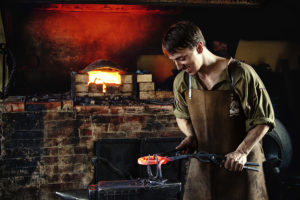
Interesting! In the Middle Ages, the color of the apron indicated a certain type of occupation. Blue was worn by weavers, blue and white stripes by butchers, and checkered by British hairdressers.
In Soviet times, an apron was part of the student uniform for girls from 6 to 16 years old. Black was intended for weekdays, because it did not distract from studies. In addition, he was the first to take the “blow” in the school cafeteria. White became an invariable attribute of special and festive events, refreshing and decorating a practical but inconspicuous brown dress.
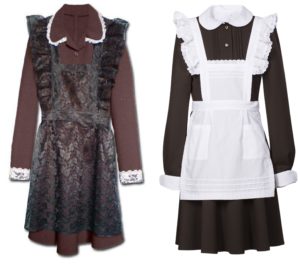
What other aprons are there?
Not everyone, even a well-educated person, knows that:
- in the days of horse-drawn transport, the apron looked like a cape made of leather or thick canvas material.Used for traveling in an open carriage in the autumn-spring period. It partially covered the rider's lower body;
- in builders' terminology, it means a decorative tile or glass covering. As a rule, this is a strip of tiles above the sink in the kitchen or above the bathtub in the bathroom;
- The apron is found in various industries. This is the name of a cover for covering production equipment. In addition, it can be part of some mechanisms, for example, in a lathe;
- Some cars are designed with an apron. This is a flexible metal or plastic element that protects the bumper from dirt and gravel flying from under the wheels while driving.
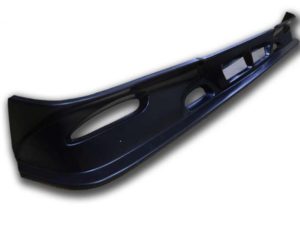
Apron models
Based on various comparative characteristics, the product can be:
- with and without a bib;
- one-piece and cut at the waist;
- a simple design without unnecessary elements and consisting of many details, including pockets and decorated.
It's easiest to make an apron without a top because it won't take much time. It is enough to sew ties or braid to a piece of rectangular fabric, processed along the edges.
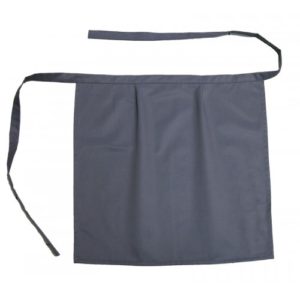
If you add another smaller rectangle on top of such an apron, providing it with ties, you will get an apron with a bib. It will minimize the ingress of dirt and splashes onto clothing.
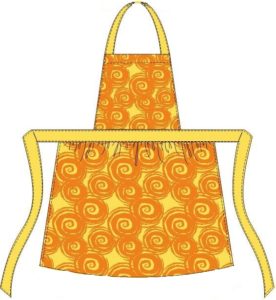
By the way! In pre-revolutionary Russia, cooks wore a white apron that covered their stomach and sides. Unlike adults, little cooks were given an apron with a bib.
Pockets are most often necessary for professional aprons. With them, working tools will always be at hand. So, for example, a street vendor can place money, a notebook with a pen and a calculator there.It’s convenient for a carpenter to lay out drawing instruments, and for a hairdresser to lay out combs and hair clips.
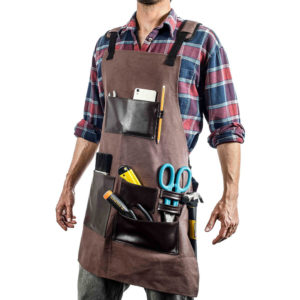
Men's aprons can have many pockets, but in general they are quite ascetic. In contrast, women's models are more diverse. They have a more complex cut, trimmed with ruffles, lace and other, more exotic details. Such specimens sometimes look even more elegant than the clothes they cover and protect. This is not surprising, since a woman wants to be beautiful and well-groomed. Moreover, she wants this not only on holidays, but also on weekdays, and even while doing household chores.
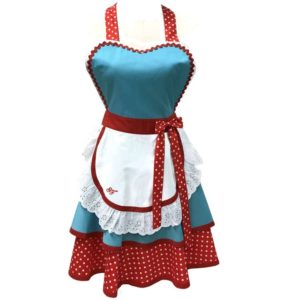
A person constantly strives for comfort: physical, mental and aesthetic. Each item should be not only functional, but also comfortable and attractive. Even an ordinary apron, if made wisely, can become a favorite accessory both at work and at home.


 0
0